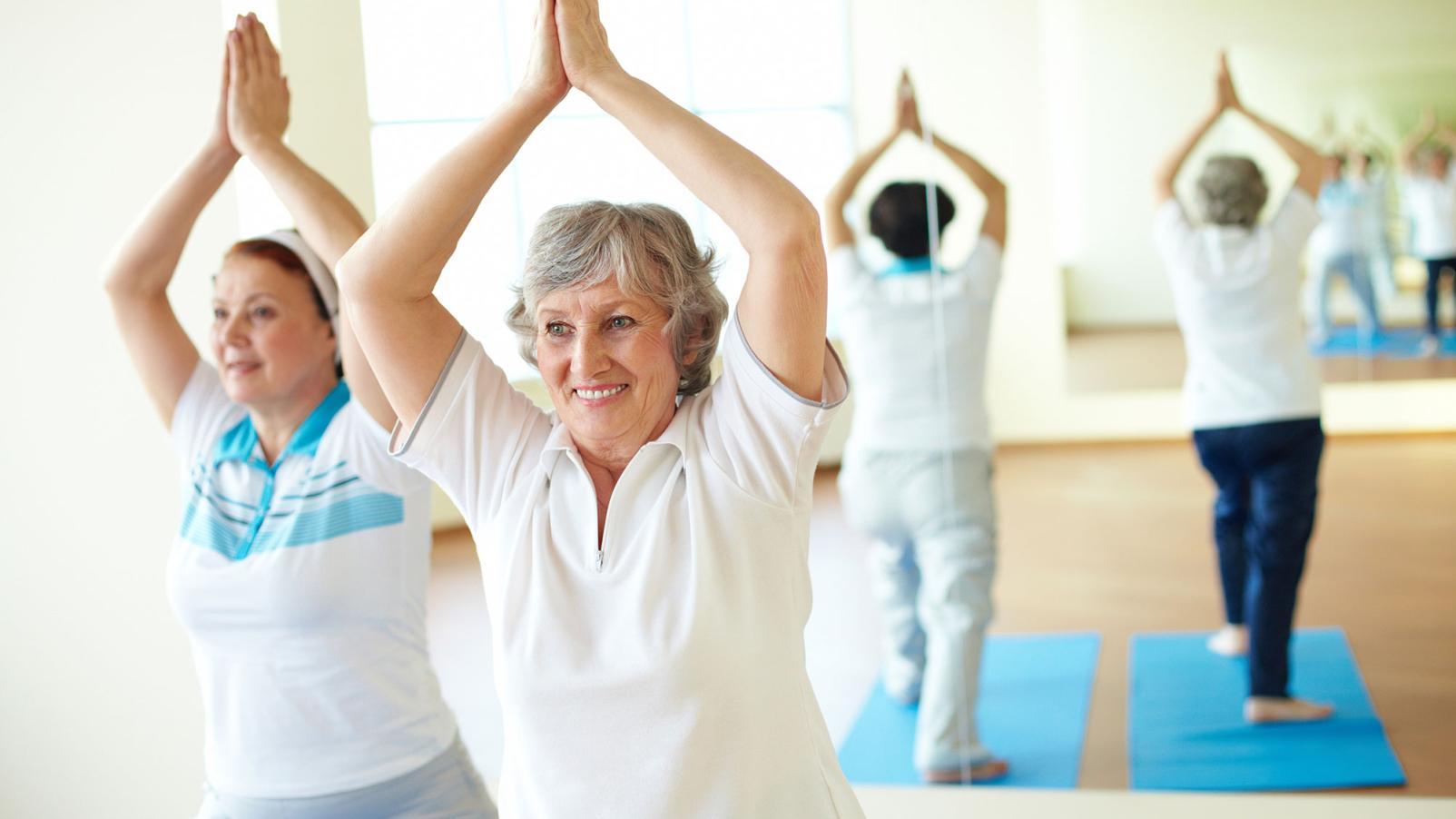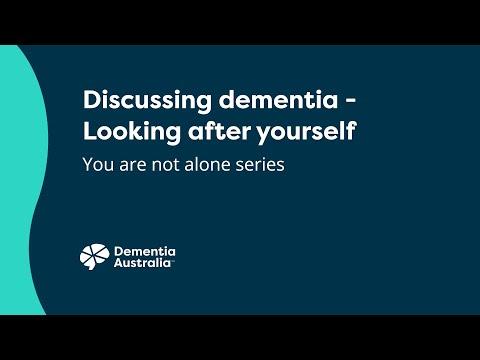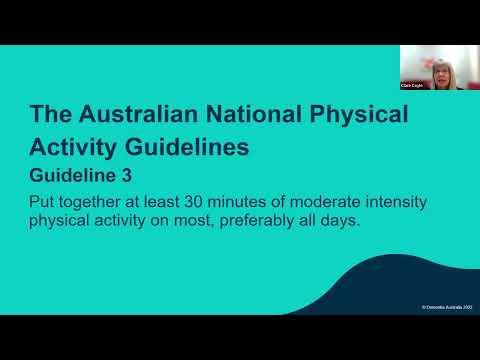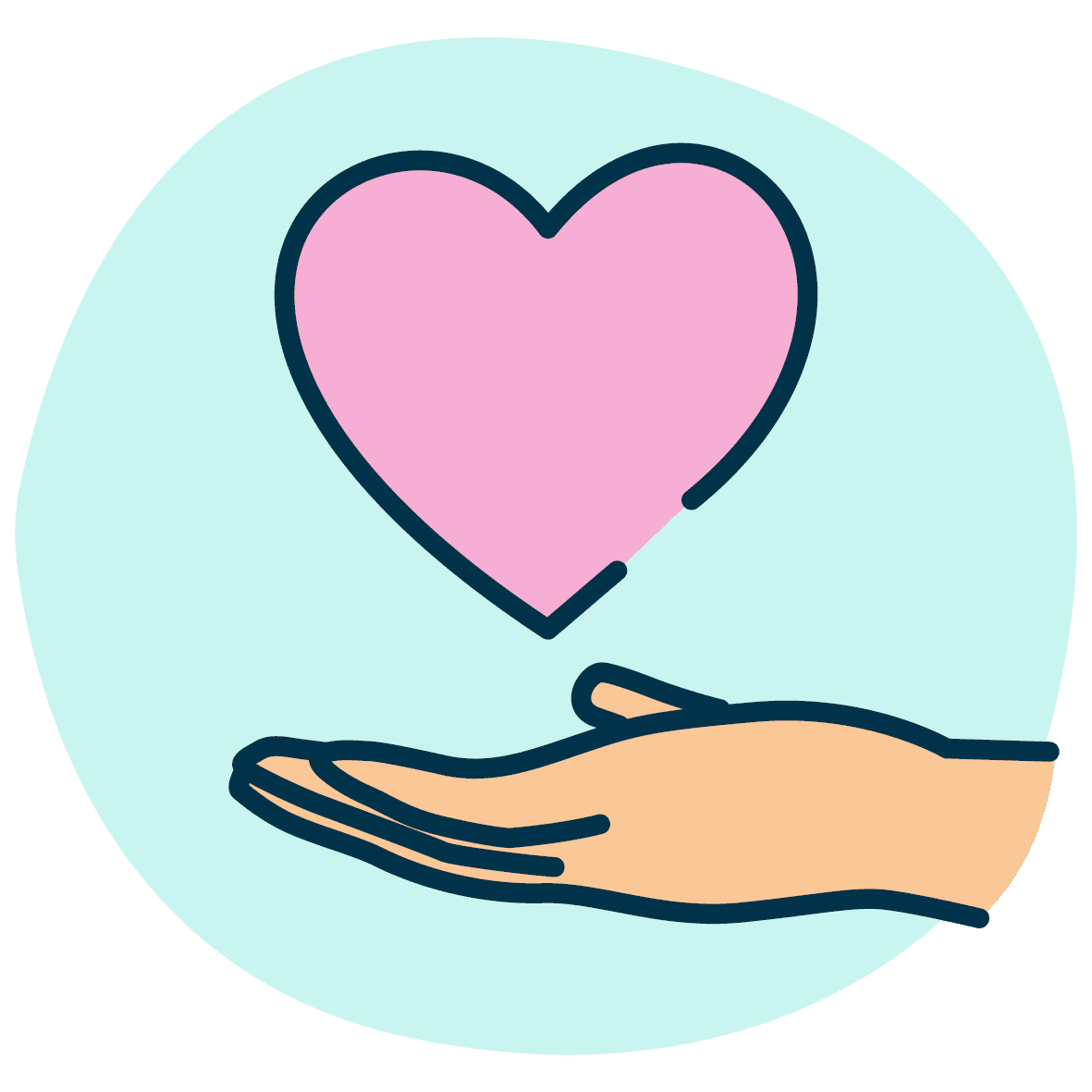Transcript
[Beginning of recorded material]
Peter: Hello, my name is Peter Hoare. I'm a dementia support specialist and counsellor with Dementia Australia, and this webinar is on the benefits of mindfulness. And before we begin, I would like to acknowledge the traditional custodians of the land that I'm recording this on, and this is the Wallumedegal people, and acknowledge the lands that you are watching today's webinar on. I'd like to pay my respects to Elders past, present, and for our emerged futures together.
In today's session on benefits of mindfulness, we are going to be covering how mindfulness could be helpful for you. Whether you are a person with a diagnosis of dementia, a family member, a friend, or a carer of a person with dementia. So, hopefully, you get something out of this. If mindfulness is something new for you, then I hope to convert you to a practise that might be able to help you, and provide benefit in some way.
In today's session, we're going to start by talking about the importance of self-care. And then, we're going to unpack a little bit about what is mindfulness and what are the benefits of mindfulness. And then, the last part of this session will actually be, we're going to do three mindfulness exercises. So, if you've watched this webinar before, feel welcome to forward straight to the exercises. Okay, so let's begin.
Self-care can be interpreted in many ways, and for some, it's maybe watching TV or scrolling on social media, and this can be considered as self-care. Looking after young family members or catching up with friends are also considered as self-care, but sometimes, these are activities that provide us with a distraction, and distraction is a good and healthy thing to do, but it may not always help us feel relaxed or rejuvenated.
Taking part in a mindfulness activity can be an effective strategy to support your own self-care. Because, sometimes, if you get worn down, caring for yourself or others can become more difficult. And it's important for yourself and for your loved ones, for you to take time to stop and take care of yourself, because no matter what you're going through, if you have had news of a diagnosis of dementia, for yourself or for somebody you care about, there can be a lot of thoughts running through your mind. Things that you need to do, things that keep you busy, maybe your emotions are activated. Perhaps you're feeling a bit tired or frustrated, or worried about your future. And so, if you bear with us and listen on, then, hopefully, you'll understand how this is not helpful for you, and how this can actually benefit for you to take some time out with mindfulness practise.
Now, when some people think about mindfulness, they think about meditation, and they think, "Well, meditation is not for me because the minute I sit down, I think of all of these thoughts and my mind's really busy and it's racing." And well, that's normal because research shows the average human, on a given day, will think about 60,000 thoughts. So, if you're sitting quietly, then you're noticing what's normally happening in your mind. So, mindfulness is not about trying to get rid of these thoughts, it's not trying to push away or get rid of the stress and difficulty that you are experiencing with your life. It's about taking some time to focus.
Okay, so let's have a look at what mindfulness is. The Cambridge Dictionary definition says that mindfulness is "the practise of being aware of your mind, body, and feelings in the present moment." Mindfulness is the practise of being aware of your mind, body, and feelings in the present moment. So how is your mind, body, and your feelings right now in the present moment? Just consider that, and whatever you've noticed, that is mindfulness. It's very simple.
So, what is mindfulness? Let's break it down a little further. It is as simple as noticing what is happening right now. Mindfulness is as simple as noticing what is happening right now in this present moment, without a need to react or analyse what is happening. Okay, so there's no need to get up or run about, it's actually allowing what is happening. Yes, I might be feeling stressed, I might be feeling worried. I might have a hundred things to do on my to-do list, but mindfulness is about, okay, those things are there and I'm noticing, but I'm also taking a moment to notice how my body's feeling about that. Just noticing what is happening with my physical body, or my emotional body, or my mental body as I'm noticing these things.
What mindfulness is not about is worrying. Because worrying is a thought, and we're delving into the thought. And worrying is about a thought about something that's happened in the past or the future, so it's not necessarily here, right now in the present moment Mindfulness is not about analysing the situation because they're also thoughts. It's not about regretting something that we could have done or didn't do. It's not about guilt about how I could be a better person in some way, fear or stressing about the future, which I'm sure you can relate with because, human beings, we do this, we love to plan and we love to solve problems, so we're always trying to forward project, "Well, okay, this is the plan, and if I can't see all the ducks in a row, then it's going to cause me some stress." And ruminating about the past, ruminating about what just happened, how I just spoke to that person, could I have done it differently? Did I do that strategy that I was meant to do? Am I being the best person? Or reacting to a situation, because if you are feeling any grief, or loss within yourself, then the grief is going to show up in many different ways. And grief often shows up as an emotion. An emotional reaction - snapping or getting frustrated, or getting short with others.
So, mindfulness is not about reacting. However, mindfulness is about noticing all of these thoughts and feelings without any judgement, because those things have happened in the past, so we're not judging them, we're just noticing them. They may not yet have happened. This could be things that I am concerned or worried about in the future that may not have happened. So, it's in the future, it's not here. Mindfulness is about being here.
Let's look at some benefits of mindfulness. There's a long list of benefits of mindfulness, but I've just taken out a few that might be relevant to what we're talking about today. The first is stress reduction. There's a lot of research that shows that mindfulness can actually reduce stress, not because we're trying to get rid of the stress, but because of the activities that I'll take you through.
Mindfulness can actually be a benefit from actually focusing on the present moment. So, mindfulness is also being shown to boost our working memory. So that means, by taking part in a mindfulness practise, we can have greater access to our working memory in this moment or in the next few hours. Mindfulness can increase focus on a task that we are wanting to do, so that we can complete tasks rather than the old running around like a chook with our head chopped off type experience where we're trying to do too many things, but we're not achieving anything. Mindfulness can help us with that focus.
I mentioned in the previous slide about reacting. Mindfulness is shown to support us with less emotional reactivity. And this is something that we can all benefit from, because, sometimes, expressing our emotion of what we're really feeling in the present moment is not helpful. And it may not be healthy for ourselves or for our loved ones. Mindfulness is shown to create more cognitive flexibility. Now, this has been found in a person in an early stage of dementia, or a carer, a family member. It doesn't matter who you are, mindfulness can actually support with a greater chance of having more cognitive flexibility. And mindfulness can enhance self-insight. Because if I am feeling more emotional, then I am not able to reflect on my behaviour. And so, by a practise of mindfulness, we can actually more readily step back and notice what's happening around us.
Some other benefits are short-term benefits to cognitive functioning. Now, there is good research that shows this. There are better longer-term psychosocial benefits as well. And this is where psychosocial benefits mean something like where we can communicate better, where we are less emotionally reactive, where we are more present with who we're interacting with in that moment. And mindfulness may improve attention, memory, executive function, processing speed, and general cognition. And this is from several pieces of research. And also, shown to reduce carer depression and carer fatigue. And that's going to benefit you, me, everybody who is important to you. That this is a practice that can be supportive for us to be our best version of ourself, because we all know that the statistics out there show that a carer doesn't always fare well in the caring experience. And so, by a practise of mindfulness, we're actually supporting our health and our resilience as carers as well.
So, I've talked a bit about mindfulness, what it is, how it can be helpful. Now, some of you might be still thinking, "Well, this isn't for me," and fair enough, because we haven't practiced it, we haven't tried it yet. So, if you're willing, how about we do a mindfulness practise together? So, as I said at the start, we've got three mindfulness exercises, and the first one is noticing your environment. So, I'm going to invite you now to move your eyes away from the screen and look around the room that you're in, and to notice three things that you don't normally look at around you.
Now, some of you might be outside, some of you inside, just noticing three things. And as you're noticing, in your mind, without saying the words, you're doing something like, I am noticing a window, I am noticing glasses. So, whatever it is that you're noticing, start off in your mind by saying, I am noticing dot, dot, dot. And apart from my voice, I invite you to notice any other sound that you're hearing.
Now, you may need to remove your headset if you're wearing one, just for a moment, just noticing three sounds. And with each sound think, "I'm noticing the sound of...", whatever it may be. Invite you to notice if you're breathing through your nose or your mouth. Notice if you are sitting, standing, or lying down. Noticing if you're feeling thirsty or not. Noticing if you're feeling hungry or not. Noticing the temperature of the air around you. Does the air on your skin feel a little cool, or warm, or neutral?
Coming back to noticing if you're breathing through your nose or your mouth. Without moving a muscle, without changing anything, noticing the pace of your breath. Noticing if you are moving your stomach, your abdomen, as you're breathing, or noticing if your ribcage is moving with each breath. Noticing which parts of your body are touching whatever it is you're sitting on, or standing on, or lying on. Noticing the sensation. Without needing to move a muscle, noticing your shoulders, noticing if they're tight or relaxed. Noticing three other things around the room that you haven't noticed in a while, or your environment, if you're outside, noticing if there's any other sounds that you can hear apart from my voice. Noticing if you're drifting off to other thoughts, thoughts of what you've been doing before sitting here or listening to this, or thoughts about what you need to do. Noticing if you're feeling a little unsettled, a little agitated or anxious in any way. And allowing that to be okay, however you are feeling. Noticing if your mind is busy, quiet.
So, noticing your thoughts, allowing what you notice to be there, allowing it to be okay. Notice how you feel in this moment, do you feel peaceful, or relaxed, or agitated, or sad, or frustrated, or nothing, or something else. Just noticing, allowing it to be okay. Coming back to noticing if you're breathing through your nose or your mouth. Without needing to change anything, noticing if you've got your eyes open or closed. Noticing if this exercise has been easy for you, or it has been challenging for you, and allowing your experience to be okay. And I invite you to take a deep breath in. Let out a sigh on the exhale. One more, inhale, deep breath in, and exhaling with a sigh. Just noticing what that experience was like for you, allowing your experience be okay. Now, staying with your breath. Another deep breath in and exhaling with a sigh.
We're going to be doing some mindful breathing now with our second exercise. Keep breathing with a deep breath in, letting out a sigh on the exhale. Allowing yourself to make some noise with that exhale. In fact, on your next inhale, deep breath in, I invite you to make a little groan, sometimes it can feel nice for our body to release with something coming out, a bit of noise, so a deep breath in, and exhaling with a groan. And one more time, at your own pace. A deep breath in, and exhaling with a groan.
And for this exercise, I'm going to invite you to close your eyes. and I'm going to invite you, whether you breathe through your nose or your mouth, it doesn't matter, but taking a breath in to the count of four, and we're going to exhale to the count of six. So, just exhaling your breath and then inhaling, 1, 2, 3, 4, and exhaling, 1, 2, 3, 4, 5, 6. Inhaling, 1, 2, 3, 4. Exhaling. 1, 2, 3, 4, 5, 6. Now, continue this breath. If this is a little too long for you, then exhaling for five and inhaling for three.
So, you could start with inhaling, 1, 2, 3, exhaling. 1, 2, 3, 4, 5, inhaling, 1, 2, 3, exhaling. 1, 2, 3, 4, 5. And we'll move now again to inhaling for four, exhaling for six, inhaling 2, 3, 4. Exhaling, 1, 2, 3, 4, 5, 6. Inhaling. 1, 2, 3, 4, exhaling. 1, 2, 3, 4, 5, 6. Taking a deep breath in, letting out a sigh. Coming back to your natural pace of breathing, and just noticing your natural pace of breathing. How is your body wanting to breathe in this moment? Noticing if you're breathing through your nose or your mouth. Noticing the pace of your breath. And then coming back to this breathing. In, 2, 3, 4. Exhaling, out, 2, 3, 4, 5, 6. Going at your own pace, inhaling, whether it's to a three, or a four, or a five, and exhaling, whether it's to a five, a six, or an eight. The aim with this breathing is for you to exhale longer than you inhale. It supports your body to downregulate, it supports your body to relax a little bit further. And just the opposite, if you're wanting to increase your energy, then you would focus more on the inhale. But we are focusing on relaxing the body, focusing on the exhale, the longer exhale, taking a deep breath in, letting out a sigh.
Now, sometimes, our breath can also help us in order to release some tension. So, to complete this mindful breathing exercise, we're going to hold our breath a little bit, okay? So, I'll talk you through it first. We're going to exhale, then you're going to take a deep breath in, and then you're going to hold your breath until you feel comfortable, or you feel the need to release. Okay, so let's do it, exhaling all of your breath, taking a big inhale, breathing in and holding your breath, clenching your fists, clenching your shoulders, clenching your whole body, holding your breath for as long as you can, and when you need to, exhaling and relaxing all of your muscles.
Now, some people can hold their breath a lot longer than others, and that's okay. So, there's no length of time that's important with this exercise, the importance is to take a deep breath in and hold, clench, and then release. So let's do it one more time. Exhaling. Breathing in. Breathing in, holding your breath, clenching, clenching your fist, clenching every part of your body, holding your breath for as long as you are able to. And then when it feels a bit uncomfortable, like you can't hold it anymore, relaxing, letting it go. Relaxing your shoulders, relaxing every part of your body. Coming back to your natural pace of breath. One more time. Exhaling. Breathing in and clenching. Clenching your arms, clenching your shoulders, clenching every part of your body, holding your breath for as long as you can. And only when you are ready, releasing. With that release, letting go of anything that you do not need. Just imagine that with that exhale, you're letting go of a little bit of stress, a little bit of emotion, and allowing your shoulders to drop, and coming back to your natural pace of breathing. So, whether you're doing the inhaling and then exhaling for a longer count, or a big breath in, hold, clench, and release.
These are two mindful breathing exercises that can help you with focus, and also, some emotional release. So you can try that exercise at any time, or come back and listen to this if you need a reminder. But now, let's move to exercise number three. And this is a body scan. So, for this exercise, it is better if you're sitting, lying down, I'm going to invite you to close your eyes, and just bring your awareness to the top of your head, breathing at your own natural pace, bringing all of your focus to the top of your head. No need to move any muscles or any part of your body, allowing your breath breathe at its own natural pace.
And now, moving your focus down to your forehead, noticing if there's any tension in your forehead. Your eyes, bringing your awareness to your eyes. Hopefully, your eyes are closed, with your eyes shut. If you don't want to have your eyes shut, that's okay. Just make sure that you're kind of looking at something a little boring, that's not going to raise your attention or distract you. Noticing your ears, your jaw. Noticing any tension in your jaw and your mouth. Taking a breath, just allowing your breath to relax any tension in your jaw or any other part of your face.
Moving your focus now, down to your neck and your shoulders. There's any tension in your shoulders, just a gentle squeeze of your shoulders, slightly tensing them on the inhale, and on the exhale, dropping your shoulders, allowing them to relax even further. Perhaps another breath, slight clench of your shoulders, allowing them to relax. Moving your focus down to your torso, your ribcage. Noticing if there's any movement of your rib cage as your body is breathing, noticing your stomach, is there any tension, or tightness, or discomfort in your stomach area? Whatever you're noticing, just allowing it to be okay.
If you find that your mind, your thoughts are drifting off, that's okay. Just take a breath, and bringing your focus back to your body, just noticing your stomach. Moving your focus to the back of your body, your spine, your shoulder blades, all the way down to the bottom of your back. Moving your focus now to your sitting bones, your thighs, if you're sitting, just noticing if what you're sitting on is comfortable or hard, uncomfortable. There's no need to move or readjust yourself. Just noticing.
Moving your focus now down to your knees and your calves. Any tension, any tightness or discomfort, or tiredness. Just noticing your ankles and your feet, noticing the sensation, your feet, they're feeling warm or cool. Are they a bit sore or relaxed? Just noticing. Allowing whatever you notice to be okay. And just travelling back up through your body, and just noticing if there was a point on your body that felt uncomfortable. Maybe there was a bit of pain, or a bit of tiredness, or tightness, or something, and bringing your focus to just one point. Or just bring all of your focus to this one point, whether it's an arm, or a shoulder, or your back, or leg, or feet, whatever part of the body you choose, just bringing your focus to a point where you might be feeling a little bit of discomfort. And let's just breathe into this spot.
As you're breathing in, bringing your awareness to this part of your body that you choose. And as you exhale, just allowing that part of the body to relax a little bit more. And two more breaths, breathing in to this part of the body. And as you exhale, just allowing it to relax a little bit more. And one last breath, and allowing your body to relax a little more. And this exercise, this body scan, is an opportunity to bring your focus to your body. Just noticing. Noticing how you feel right now, allowing whatever you notice to be okay.
You can come back to this exercise or listen to it again on this recording. It'd be a very helpful exercise at the end of the day, you are wanting to relax your body before preparing to go to bed, or feeling a little bit of tightness or tension. It's not a miracle cure. Our aim is not to get rid of anything. Our aim here is for you to just notice, for a few minutes, what's happening in your body. Sometimes, we forget about our body through the day. And this is a chance for you to just allow it to be there, it's doing its best. Now, it's time to rest.
So, these are the three mindfulness exercises that we wanted to share with you today. We invite you to come back and listen to this webinar at any time you need some self-care. If you're someone who said, "Well, I'm not a meditator and I don't know how this could help me." Well, I hope that this has supported you. That one of the three exercises might have appealed to you a little bit more, as an opportunity for you to take some time out, to support you to be your best self. I want to thank you, and if you need any further support, if this has brought up any thoughts or feelings that you want to discuss with anybody, please call the National Dementia Helpline on 1800 100 500. We have many services here at Dementia Australia to be able to support you at any point in this experience.
And so, hope you enjoy this, and we'll see you again, either in this session, or in one of our many other sessions that might support you at this time. Thank you.
[Title card: No matter how you are impacted by dementia or who you are, we are here for you.]
[Title card: Dementia Australia. National Dementia Helpline 1800 100 500. Dementia.org.au]
[END of recorded material]



 Physical exercise
Physical exercise Nutrition
Nutrition Sleep
Sleep
 Get peer support
Get peer support

